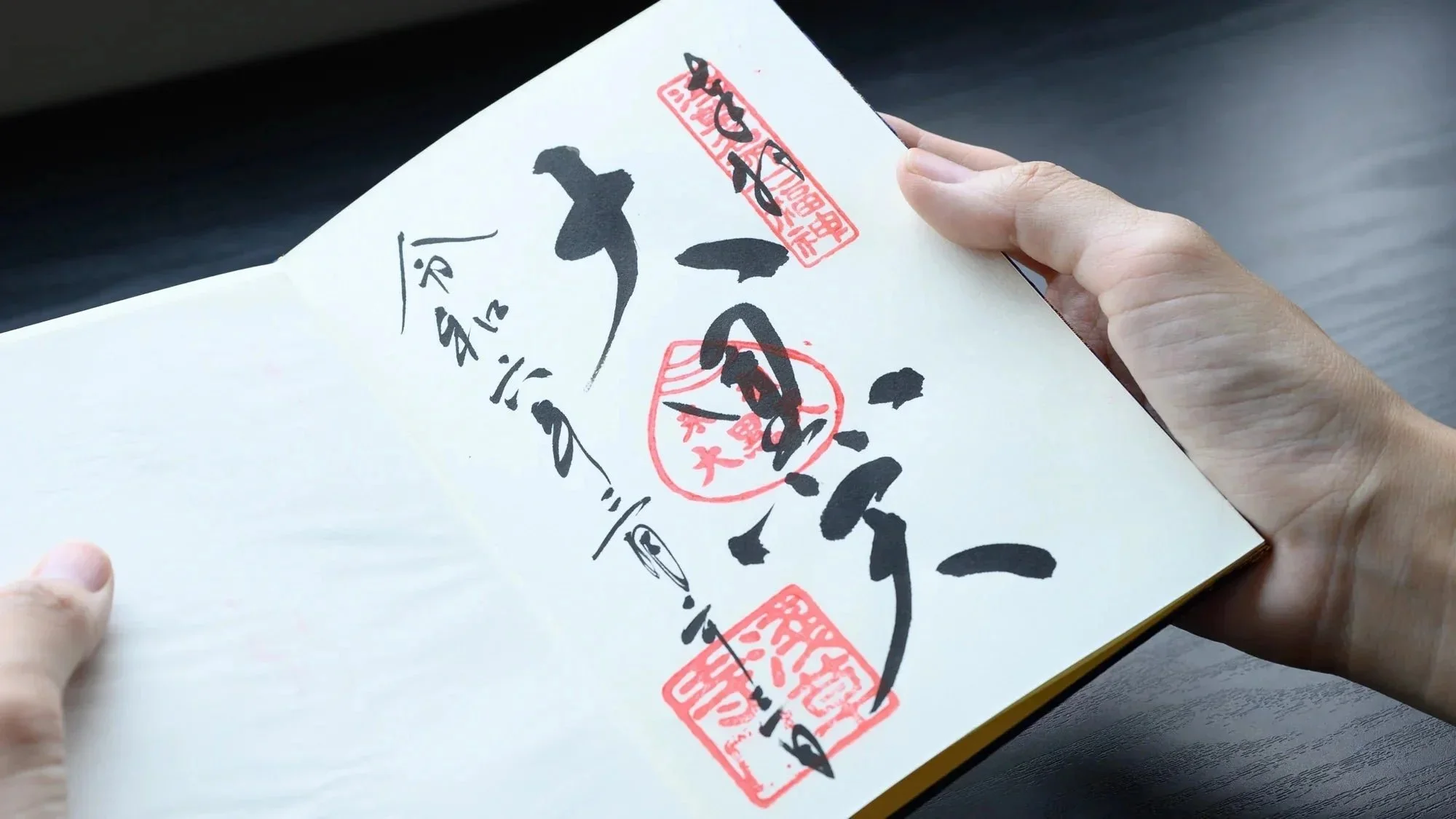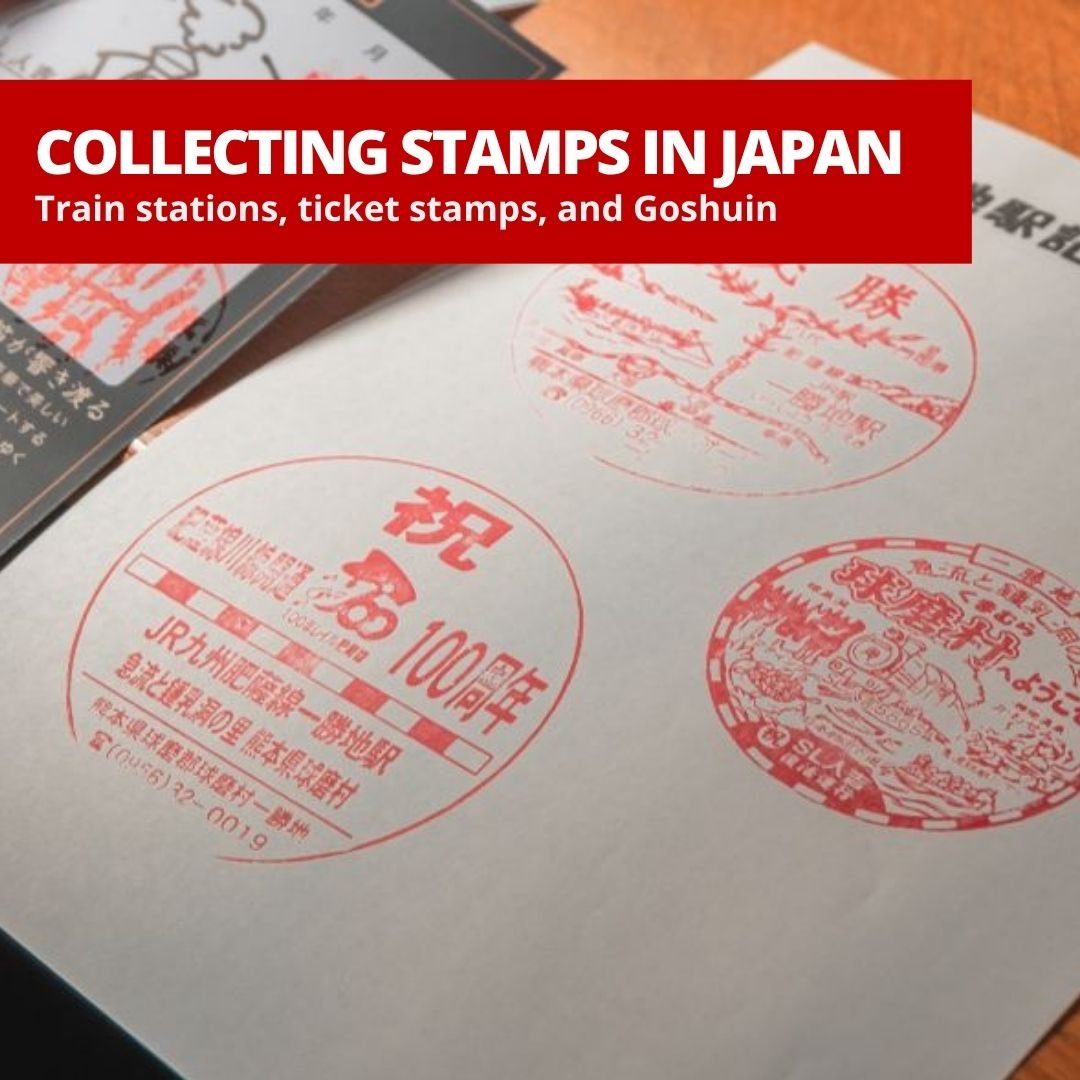Stamp Collecting as Souvenirs in Japan: From Train Stations to Temples
If you're looking for unique and affordable souvenirs from Japan, one cultural tradition stands out: stamp collecting. Known locally as "stamp rallies" or simply collecting eki stamps (station stamps) and goshuin (temple and shrine stamps), this hobby has gained popularity with both Japanese locals and international travelers.
In this guide, we’ll cover three types of stamp-collecting experiences in Japan:
Regular train station and tourist stamps
Cancellation stamps to keep your train tickets as souvenirs
Traditional Goshuin temple stamps
💮 Regular Station & Tourist Information Stamps
For many travelers, stamp collecting in Japan isn’t just about souvenirs—it’s about creating a personal, visual record of their journey. Each stamp is uniquely designed to reflect the character of a specific place, whether it’s a famous landmark, local mascot, or spiritual site. The hobby appeals to both casual tourists and dedicated collectors because it’s affordable, fun, and deeply tied to Japanese culture.
Image Credit: Japan Web
Throughout Japan, you’ll find unique rubber stamps located at:
Train stations
Tourist information centers
Roadside stations (Michi-no-Eki)
Major department stores and museums
Each stamp usually features a local landmark, mascot, or cultural icon from the area. The fun lies in hunting them down and collecting them in a dedicated stamp book or notebook.
What You Need: Eki Stamp Collection Books
If you’re serious about collecting eki stamps in Japan, you’ll want to pick up a dedicated stamp collection book. These books come in various sizes, but the most common format is approximately passport-sized with around 50 thick pagesdesigned to prevent ink from seeping through.
You can find eki stamp books at most major bookstores in Japan, usually in the Foreign Book section or stationery aisles. They typically cost around ¥650 and come in a range of fun cover designs.
💡 Travel Tip: Having trouble finding a stamp, or not sure if a location you’re visiting has one? You can simply ask staff “sutampu ga arimasu ka” = “is there a stamp?” and staff will be able to help.
Find Stamp Locations Easily with the Stamp Quest App
Don’t leave your next stamp to chance—use the Stamp Quest app to instantly find stamp locations across Japan. Available for both iOS and Android, this free-to-download app is a must-have tool for both casual tourists and serious stamp rally enthusiasts.
With Stamp Quest, you can:
Search for physical stamp locations near your current location
Plan ahead by checking stamp spots along your travel route
Add stamps to your checklist to ensure you don’t miss any must-visit locations
Collect digital versions of physical stamps by checking them off in the app as you visit
Whether you're exploring train stations, tourist information centers, or temples, Stamp Quest helps you stay organized and makes collecting stamps a breeze—no matter where your journey takes you in Japan.
🎟️ Special Cancellation Stamps for Train Tickets
For fans of Japan Rail (JR) tickets, there’s an extra-special form of stamp collecting:
At many stations, particularly larger or historically significant ones, you can request a "cancellation stamp" on your used train ticket.
Image credit: Japan National Tourism Organization (JNTO)
How to collect them:
When disembarking, do not put your ticket through the automatic gate (it will be retained). Instead, visit the manned ticket gate window.
Say: “mukoin kudasai” = “Cancellation stamp, please.” or “omochikaeri kudasai” = “I’d like to take it with me, please.”
The staff will stamp your ticket with a unique station stamp, invalidating it for travel but letting you keep it as a memento.
Not all stations offer this, but many major hubs and tourist areas do—making each stamped ticket a personal and location-specific keepsake.
⛩️ Goshuin: Collecting Temple and Shrine Stamps in Japan
While station stamps are purely for fun, Goshuin have deeper religious and cultural significance in Japan. Goshuin are beautiful, handwritten inscriptions from Buddhist temples and Shinto shrines, given as a form of spiritual record for pilgrims and visitors.
Image credit: Musubi Kiln
The History of Goshuin: Why Goshuin Are Special
Originally, Goshuin were issued as certificates of prayer or pilgrimage, given to worshippers who offered handwritten sutras or donations at Buddhist temples and Shinto shrines. Today, receiving a Goshuin still symbolizes respectful participation in religious practice rather than a simple souvenir.
Each Goshuin is carefully hand-written by temple or shrine staff using traditional brushes and ink, combined with beautifully designed red seals unique to that location. This practice connects visitors with centuries of Japanese spiritual tradition, and each stamp becomes part of a personal pilgrimage record rather than just a collection.
Important Note:
You should not collect regular tourist or station stamps in the same book as Goshuin. This is considered disrespectful because:
Goshuin are spiritual documents. Mixing them with casual stamps removes their intended religious significance.
Goshuin-cho , the special books used, are made with the correct paper type and binding to handle ink.
Where to Buy a Goshuin-cho
You can purchase a Goshuin-cho at most major temples and shrines, select Japanese stationery stores and some department stores
Prices typically range from ¥1,000–¥3,000 depending on size, design, and quality. Keep in mind that some temples may refuse to issue a Goshuin if you present a non-Goshuin-cho notebook.
Collect Unique Souvenirs While Respecting Japanese Culture
Whether you're riding the rails or exploring ancient shrines, stamp collecting in Japan offers a fun, meaningful, and affordable way to capture your journey.
You May Also Like
Related Travel Guides









